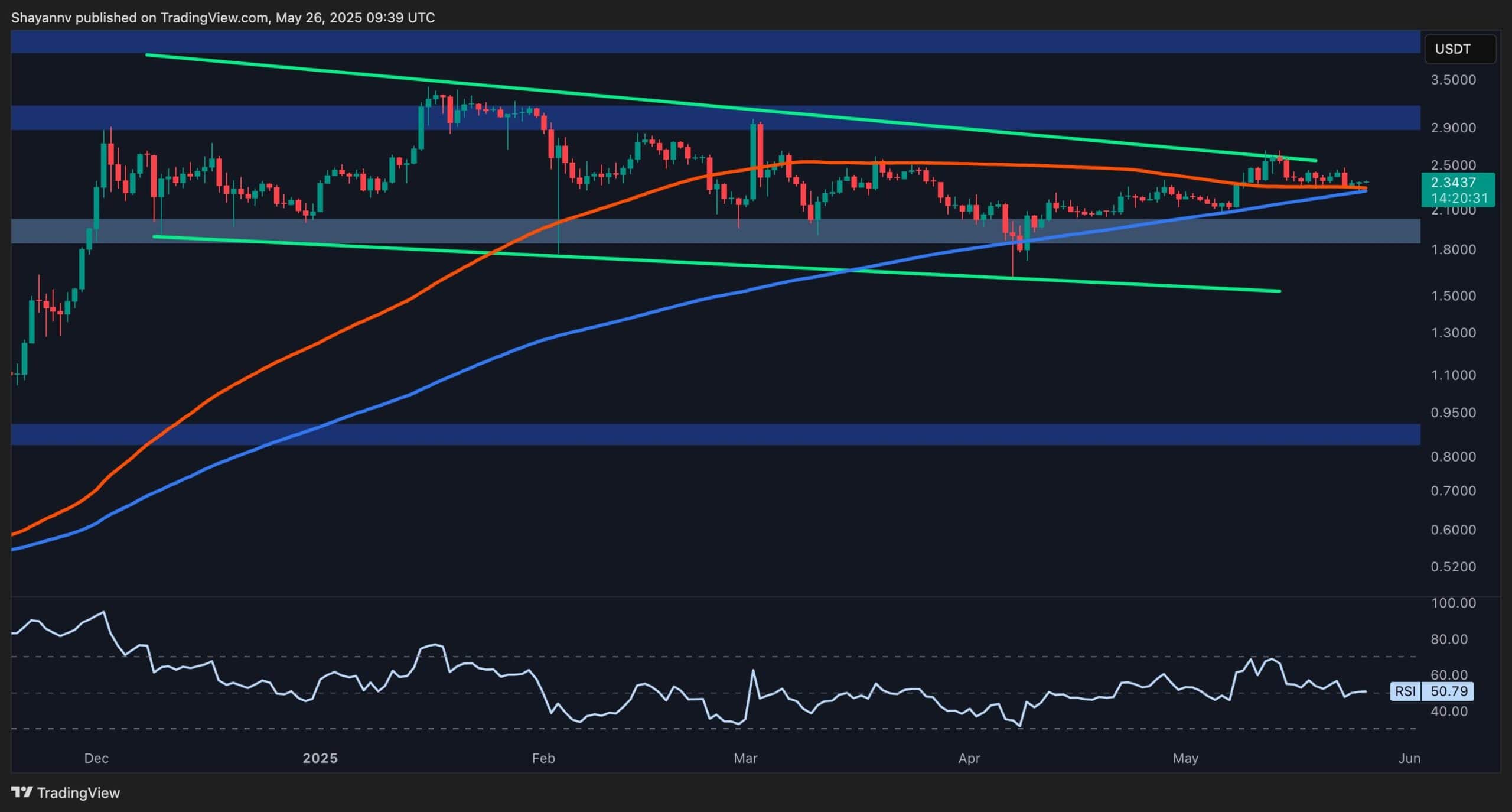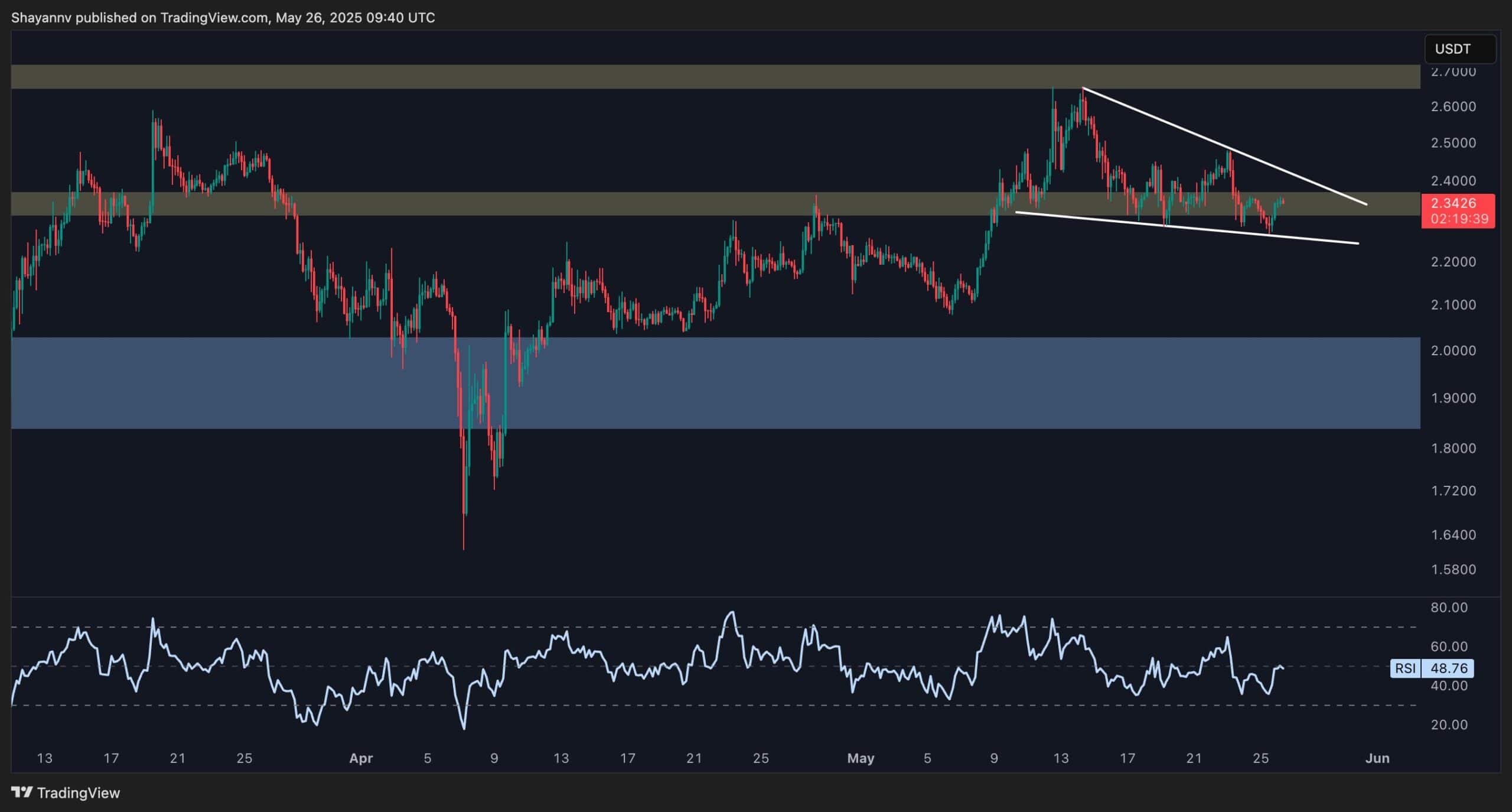XRP Primed for Explosive Moves After Breaking Consolidation: A Trader’s Playbook
Ripple’s XRP has been coiled like a spring—and the charts suggest it’s ready to snap. Here’s what happens next when the dam breaks.
The Setup: Weeks of tight range-bound trading finally give way. Textbook consolidation patterns don’t last forever, and XRP’s patience looks exhausted.
The Triggers: Watch for volume spikes and BTC correlation breaks. When XRP decouples from Bitcoin’s mood swings, things get interesting fast.
The Targets: Historical resistance levels become trampolines on the way up—or trapdoors on the way down. Either way, volatility’s coming to collect its dues.
Traders are placing bets while institutional money pretends not to watch (wink). Because nothing gets hedge funds interested like FOMO dressed up as ’strategic allocation.’
XRP Analysis
The Daily Chart
XRP is currently trading within a narrow and critical price range, bounded by the 100-day and 200-day moving averages at $2.2, and the descending wedge’s upper boundary NEAR $2.5. This consolidation range marks a pivotal battleground between bulls and bears.
The muted price action and the RSI hovering around the neutral 50 zone reflect a state of equilibrium, suggesting that market participants are awaiting a breakout to define the next trend.
Should XRP find support from the key moving averages and successfully break above the descending wedge, a bullish rally toward the $3.3 region becomes likely. However, failure to reclaim the $2.5 resistance may trigger a bearish rejection, with downside risk toward the $2 support level.
The 4-Hour Chart
On the lower timeframe, Ripple has formed a short-term descending wedge, typically considered a bullish continuation pattern. The price is consolidating at the wedge’s lower boundary near $2.2, showing low volatility as traders await a catalyst.
If XRP breaks above the wedge’s upper trendline and reclaims the $2.4 level, it will likely confirm a bullish breakout, setting the stage for a rally toward the $2.8 resistance. Conversely, a failure to break out and a subsequent drop below $2.2 could result in a bearish MOVE toward $2.

